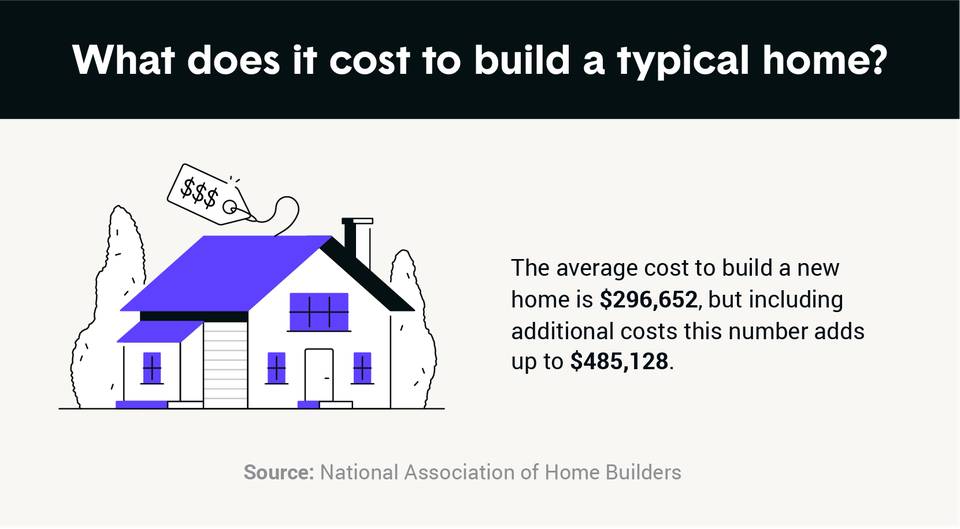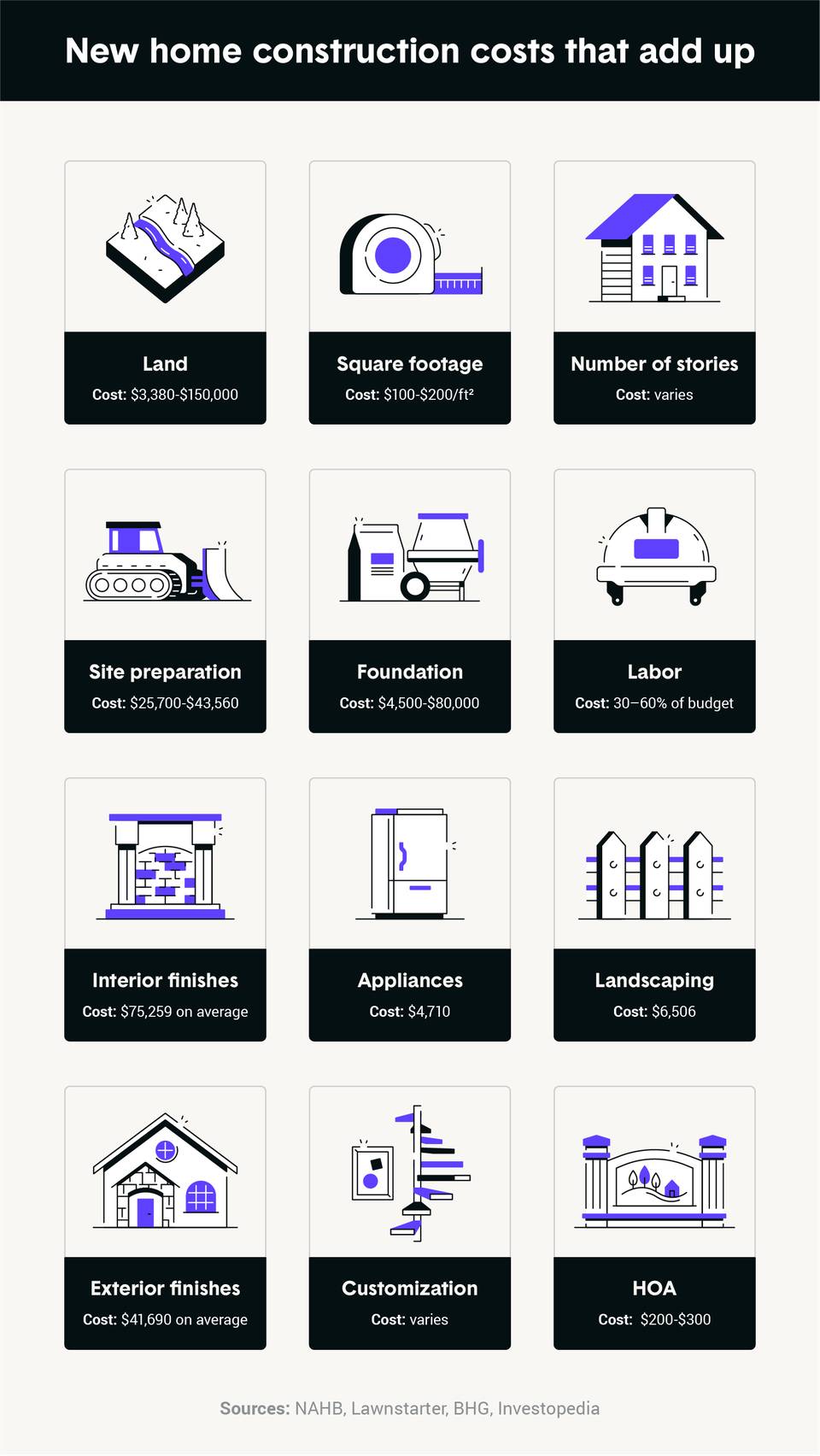1. Buying land
In order to construct a house, you’ll need to have land to build it on. The national average for an acre of farmland comes in at $3,380, but the location and type of land will greatly affect the price. Land in densely populated states, urban areas and housing developments tend to cost much more than the national average and can reach upwards of $150,000 per acre.
2. Preparing the build site
While purchasing your land is one cost, the price to develop it is another. Preparing the land for construction can result in some hefty fees like land clearing ($2,581) and a land survey ($500). The condition of your land can also increase these expenses. For example, a lot with uneven terrain or heavy forestry will be more expensive to clear and grade than flat, treeless land.
Extra land development costs include the following:
- Conducting a soil test: $1,268
- Tearing down a pre-existing structure: $4.33 to $11.67 per square foot
- Adding erosion control (hydroseeding): $0.08 to $0.20 per square foot
3. Determining square footage and the number of stories
Choosing the right amount of space for you and your family to live in is an important decision because you’re investing in what is, hopefully, your forever home. With this in mind, it’s good to be aware that the higher the square footage of your house, the higher the price tag. Additionally, designing and building a house with multiple stories will also increase your total cost.
4. Laying a foundation
On average, it costs about $10,000 to lay a new foundation for a 1,200 square foot home and $27,000 for a 2,400 square foot home. Generally, the price will vary based on a number of factors like the type of foundation needed and can range anywhere from $4,500 to $80,000. It’s worthwhile to invest in a solid foundation, as this will help your home be structurally sound.
5. Picking interior and exterior finishes
The finishes you choose for both the inside and outside of your home can also quickly add up. Interior finishes on average will cost you about $75,259, and exterior finishes excluding roofing average out to around $31,736.
These totals will differ significantly based on your customization and size. Because the cost varies greatly, we’ve listed some major finishes below so you can remember to do your research and get quotes on your finish preferences.
Interior finishes:
- Cabinetry
- Countertops
- Doors
- Drywall
- Flooring
- Fireplace
- Interior paint
- Lighting
Exterior finishes:
- Windows
- Siding
- Doors
- Exterior paint
6. Hiring professionals
If you’re not already an architect, carpenter, framer, electrician and plumber all rolled into one person, it’s best that you hire the pros to help build your house. However, the cost of labor will make up a sizable chunk of your construction bill. Although rates for each professional will vary based on your house, you can expect labor to take up 30% to 60% of your budget. Find some general rates for necessary services below:
7. Installing a roof
The price tag to quite literally put a roof over your head is about $10,000. You can choose from different roof types such as asphalt, clay, concrete, metal, slate, synthetics and wood. It’s important that you pick quality materials, as it’s a vital component of the structure of your home and you’ll want it to last.
8. Choosing appliances
Once your house is constructed, you’ll want to outfit it with appliances that meet your daily needs. Depending on whether you choose the latest in luxury or go with a no-frills approach, your appliance costs will range greatly. For the average family home, the NAHB reports that appliances run about $4,710 on average.
9. Putting in landscaping
Aside from actually building your house, you’ll want to spend on landscaping to finish off the look of your home. Landscaping on average will cost about $6,506 for a typical home, and it can add value to your home by boosting its curb appeal.
10. Accounting for extras
When planning your budget, it’s wise to account for additional costs that may not be listed here. Whether you decide to customize every room in your house or just run into an unexpected problem during construction, you’ll be happy to have a financial cushion built into your budget. If you have money left over when your project is finished, you can choose to save it for the future or spend it on extras that will add value to your home like a wooden deck.






